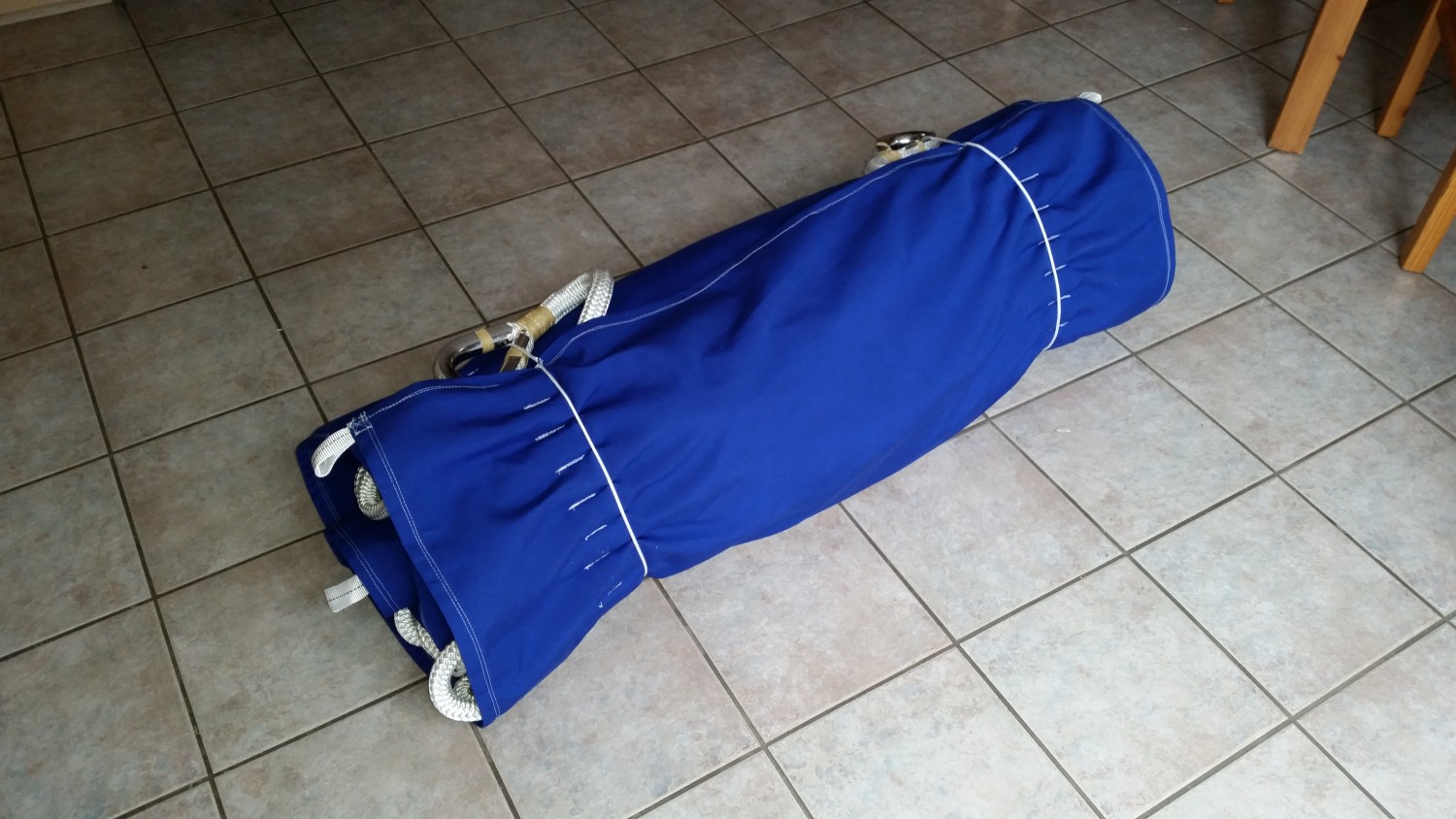One of the problems of buying a boat in the fall is that you don’t get to play with your new toy until spring. We are left with thoughts and plans, but not a lot of practical hands-on work to do. But we did find a winter project to attack, a Series Drogue of Donald Jordan’s design. Kinship was sold without a drogue, though it is fitted for one, but the last owner is now using it on his new boat. 
There are massive chainplates on the stern to take the bridle line on the drogue. The series drogue is designed as a way to survive breaking waves in a storm. In large seas, a boat can race down the face of a wave and end up slewed to one side in the trough. This allows a wave to break over the boat, potentially rolling the boat. Many boats have lost their rigs in these accidents and some have sunk.
A drogue works by slowing the boat as it rides down the wave and in the process keeps the bow pointing in the right direction. A breaking wave will poop the cockpit but will not roll the boat. There are a few different designs of drogues, most have a single large cone or parachute to provide the drag. This type of design can break the surface of the water between waves and can lead to large snatch loads as the drogue re-enters the water. A series drogue has many small cones on a long line to provide the required drag. This ensures that even if the line is exposed in a trough, most of the cones are still providing drag and there are no snatch loads.
For Kinship we need 124 cones and about 300ft/100M of line. We bought a kit with the cones from Sailrite and we picked up the line from our local marne store, The Chandlery. The first job was to cut the webbing tapes, 124 cones * 3 tapes was a lot of time spent at the stove using the hood to get ride of the fumes from the hot knife.

That job done, the next stage is to build the cones, the 3 tapes are basted together with tape and then sewn. We normally do a big jigsaw over the Christmas holidays, if you come over for dinner, you have to add some pieces to the puzzle to earn your food. This year the drogue project replaced the jigsaw, Kathleen’s sister Angela did a great job an assembled about half the cones for us, thanks Angela! The next stage is sewing the tapes to the cones and then closing the cone.

Kathleen used a section of pipe to store the cones as she built them. The line is then passed through the pipe to make installing the cones easy.
As Kathleen made the cones, I built the lines. Using 3/4 inch line, I spliced the two bridle lines and the first 140 ft section of line. The series drogue is only used to reduce danger at sea, this focused my mind on the quality of my splices and I discarded the first 2 that I did. I used a both my Toss wand and Selma fids to make the splices. the wand to but the cover in the core and the fid to put the core in the cover. This allowed very consistent splices with no loose cover strands.
I made the loops big enough to allow the lines to be joined using a cow hitch.


Once we had the lines made, we started the process of putting the cones on to the line.

 Adding the cones one at a time is a simple but slow process, the pipe stores the cones, the line, marked at 20 inch intervals with a 16 inch mark for each cone. We have completed the first line, we are waiting for the small second line to come in, more on this project later.
Adding the cones one at a time is a simple but slow process, the pipe stores the cones, the line, marked at 20 inch intervals with a 16 inch mark for each cone. We have completed the first line, we are waiting for the small second line to come in, more on this project later.











